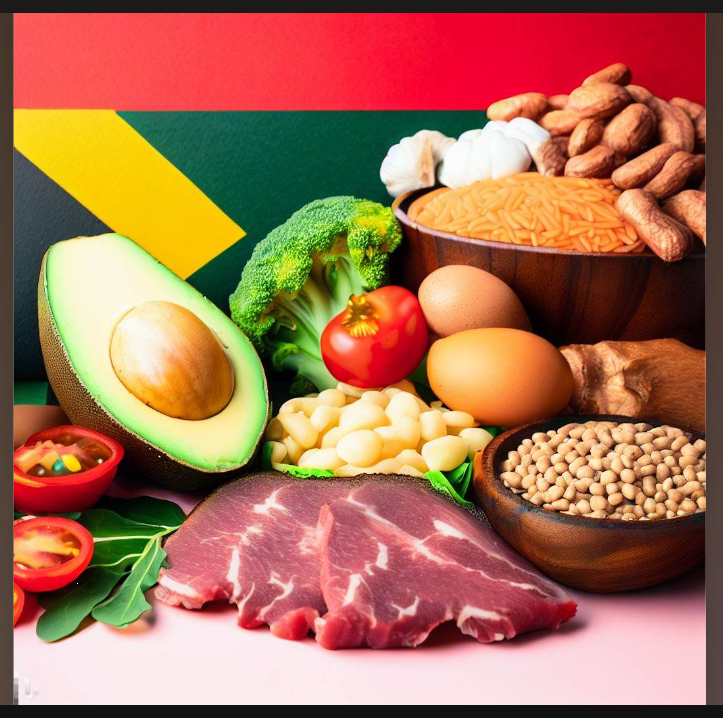A Complete Guide to the Banting Diet for Zimbabweans: Tips, Meal Plans, and More
As more people look for healthy and sustainable ways to lose weight and improve their overall health, the Banting diet has gained popularity worldwide, including in Zimbabwe. This guide will delve into the Banting diet in the context of Zimbabwean cuisine, providing you with essential information and practical tips to successfully embark on your Banting journey.
Introduction to the Banting Diet
The Banting diet is a low-carbohydrate, high-fat (LCHF) eating plan named after its creator, William Banting. It emphasizes consuming whole, unprocessed foods, with a focus on healthy fats, moderate protein, and low carbohydrate intake. The primary goal of the Banting diet is to help individuals lose weight, stabilize blood sugar levels, and improve overall health by encouraging the body to burn fat for energy instead of carbohydrates.
Banting Green List
The Banting Green List consists of foods that you can eat without restriction while following the Banting diet. These foods are low in carbohydrates and high in nutrients. Some examples of items from the Banting Green List that can be incorporated into a Zimbabwean context include:
- Leafy greens: spinach, kale, cabbage, and rape
- Non-starchy vegetables: cauliflower, broccoli, okra, and green beans
- Protein sources: beef, chicken, fish, and eggs
- Healthy fats: avocado, coconut oil, and olive oil
- Dairy: full-fat cheese, butter, and cream
Banting Breakfast
A Banting breakfast should be filling, delicious, and low in carbohydrates. Here are some Banting-friendly breakfast ideas for a Zimbabwean context:
- Omelette with spinach, cheese, and avocado
- Boiled eggs with a side of mixed greens and a drizzle of olive oil
- Scrambled eggs with sautéed vegetables and smoked salmon
- Full-fat Greek yogurt topped with nuts and a few berries
Banting Red List
The Banting Red List contains foods that should be avoided on the Banting diet due to their high carbohydrate content or processed nature. Examples of foods on the Banting Red List that are commonly found in Zimbabwean cuisine include:
- Grains: maize, wheat, rice, and oats
- Starchy vegetables: potatoes, yams, and sweet potatoes
- Legumes: beans, lentils, and peas
- Sugars: white sugar, brown sugar, and honey
- Processed foods: fast food, snacks, and sugary beverages
Banting Meal Plan Examples
When following the Banting diet in a Zimbabwean context, it’s essential to create meal plans that incorporate Banting-friendly foods while still enjoying the flavors and ingredients native to Zimbabwean cuisine. Here are some examples of Banting meal plans:
- Lunch
- Lunch: Grilled fish with a side of sautéed kale and a fresh tomato and cucumber salad
- Dinner: Beef stew with cauliflower rice and a side of roasted green beans
- Snack: A handful of nuts and seeds or a small serving of full-fat Greek yogurt with a few berries
Banting Food List
To make your Banting journey in the Zimbabwean context easier, here is a comprehensive list of foods that you can enjoy:
- Protein: Beef, chicken, fish, eggs, and lamb
- Vegetables: Leafy greens, cauliflower, broccoli, bell peppers, zucchini, and tomatoes
- Fruits: Berries, olives, and avocados (in moderation)
- Fats: Coconut oil, olive oil, butter, and ghee
- Dairy: Full-fat cheese, cream, and unsweetened Greek yogurt
- Nuts and seeds: Almonds, macadamias, walnuts, and sunflower seeds
Banting Meal Plan for a Week
Here’s an example of a Banting meal plan for a week in a Zimbabwean context:
- Monday: Breakfast – Scrambled eggs with avocado; Lunch – Chicken salad with mixed greens; Dinner – Beef stir-fry with mixed vegetables
- Tuesday: Breakfast – Greek yogurt with nuts and berries; Lunch – Grilled fish with sautéed spinach; Dinner – Lamb chops with roasted cauliflower and green beans
- Wednesday: Breakfast – Omelette with cheese and mushrooms; Lunch – Egg salad with mixed greens; Dinner – Chicken curry with cauliflower rice
- Thursday: Breakfast – Boiled eggs with a side of mixed greens; Lunch – Tuna salad with lettuce wraps; Dinner – Pork chops with roasted broccoli and a side salad
- Friday: Breakfast – Full-fat Greek yogurt with a few berries; Lunch – Chicken and vegetable stir-fry; Dinner – Grilled steak with a side of sautéed kale
- Saturday: Breakfast – Scrambled eggs with smoked salmon; Lunch – Beef and vegetable kebabs; Dinner – Fish curry with a side of roasted vegetables
- Sunday: Breakfast – Omelette with spinach and feta cheese; Lunch – Chicken and avocado salad; Dinner – Slow-cooked beef stew with a side of steamed green beans
Banting Meal Plan for Weight Loss
To optimize your Banting meal plan for weight loss, focus on consuming nutrient-dense, whole foods that are low in carbohydrates and high in healthy fats. Additionally, ensure you’re eating an appropriate number of calories for your body and activity level. A typical Banting meal plan for weight loss might include:
- Breakfast: Vegetable omelette with a side of avocado
- Lunch: Chicken and spinach salad with a generous drizzle of olive oil
- Dinner: Grilled fish with a side of roasted vegetables
- Snack: A small serving of nuts and seeds or a few olives
How to Do Banting?
Successfully following the Banting diet involves several key steps:
- Educate yourself on the Banting diet principles, food lists, and guidelines.
- Eliminate high-carbohydrate and processed foods from your pantry and refrigerator.
- Stock up on Banting-friendly foods, such as proteins, healthy fats, low-carb vegetables, and a few low-carb fruits.
- Create meal plans and grocery lists to help you stay on track.
- Monitor your macronutrient intake, ensuring that you consume the appropriate amounts of fats, proteins, and carbohydrates.
- Consider consulting a healthcare professional or nutritionist to ensure you’re meeting your nutritional needs.
- Stay consistent and be patient with the process, as it may take time for your body to adapt to this new way of eating.
What to Eat When Banting
When following the Banting diet, focus on consuming foods from the Banting Green List, which includes:
- Protein sources such as beef, chicken, fish, and eggs
- Non-starchy vegetables like leafy greens, cauliflower, broccoli, and bell peppers
- Healthy fats like coconut oil, olive oil, butter, and ghee
- Full-fat dairy products, including cheese, cream, and unsweetened Greek yogurt
- Nuts and seeds, such as almonds, macadamias, and sunflower seeds
Is Banting Good for Diabetics?
While the Banting diet may help some individuals with diabetes manage their blood sugar levels by reducing carbohydrate intake, it’s important to consult with a healthcare professional before making any significant changes to your diet. The Banting diet may not be suitable for everyone, and individual needs may vary.
How to Make Banting Bread
Banting bread is a low-carb alternative to traditional bread. Here’s a simple recipe:
- Preheat your oven to 180°C (350°F) and line a loaf pan with parchment paper.
- In a large bowl, mix together 2 cups of almond flour, 1/4 cup of ground flaxseeds, 1/4 cup of psyllium husk powder, 1/2 teaspoon of salt, and 1 teaspoon of baking powder.
- In another bowl, whisk together 4 large eggs, 1/4 cup of melted coconut oil or butter, and 1/2 cup of warm water.
- Combine the wet ingredients with the dry ingredients and mix until a dough forms.
- Transfer the dough to the prepared loaf pan and smooth the top with a spatula.
- Bake for 45-55 minutes, or until a toothpick inserted into the center comes out clean.
- Remove from the oven and allow the bread to cool before slicing.
Conclusion
The Banting diet can be a powerful tool for weight loss and improved health when adapted to the Zimbabwean context. By understanding the principles of the Banting diet, following the guidelines, and incorporating local foods, you can successfully embark on your Banting journey. Remember to always consult with a healthcare professional before making any significant changes to your diet, and be patient with the process as your body adapts to this new way of eating.




